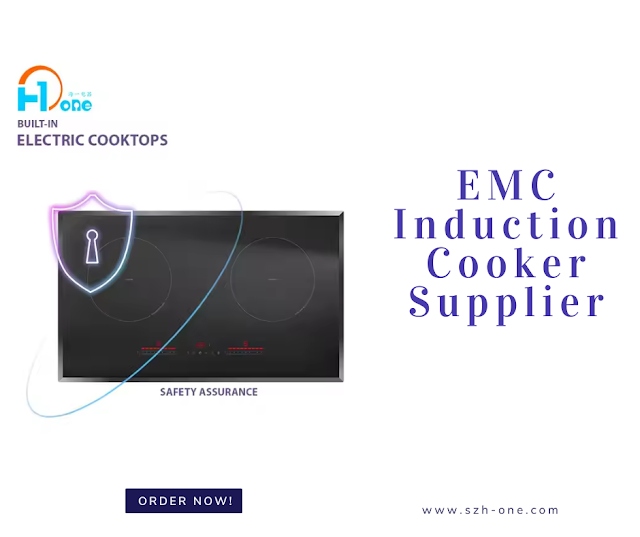What are the Functions and Applications of an Induction PCB in the Industrial and Medical Field?
An induction PCB is an electrical component used in electronics manufacturing and biomedical applications such as defibrillators, which deliver electrical shocks to revive people who've suffered heart attacks or other life-threatening conditions. The most common use for this type of PCB is in medical devices like portable scanners that are used to detect tumors and other abnormalities in a patient's body. These have been around since the 1980s but have just recently gained popularity because of their ability to provide accurate results without having any side effects on the patient at all. When you are looking to get one for your medical facility, ensure to get a quality one from a reliable induction PCB supplier.
Induction PCBs are used in the medical field
Induction PCBs are used in the medical field. They're used in biomedical
applications such as defibrillators, which deliver electrical shocks to revive
people who've suffered heart attacks or other life-threatening conditions.
They are also used in industrial manufacturing
The most obvious advantage of using an induction PCB is that they are
less expensive than traditional PCBs. This is due to their ability to be made
in a single step and the fact that they don't need to be drilled or cut.
Additionally, because they're less prone to failure than traditional PCBs,
you'll see fewer defects in your final product.
Induction boards are also more durable than their counterparts; this
makes them ideal for use in environments where there's a high risk of damage
such as factories or warehouses where equipment may get dropped on them
repeatedly (think forklifts). They're also great for making smaller circuits
because there's no need for holes or other openings so your components can fit
directly onto the board itself without having any extra space around them.
These can be customized to meet the specifications
The induction PCBs that are used in the medical field can be customized
to meet the specifications of the doctor who will be using them, meaning that
they can be personalized in order to make them more effective at treating
certain conditions.
Induction PCBs are also used for a variety of other purposes, including:
- Diagnosing
patients who have been injured or sickened by specific chemicals or toxins
(this is especially useful for emergency situations).
- Determining
whether someone has been infected with certain viruses and bacteria.
An induction PCB is made using copper foil that has
been shaped into a specific pattern
An induction PCB is made using copper foil that has been shaped into a
specific pattern and then etched to remove any unwanted material. Copper foil
is commonly used to make printed circuit boards (PCBs) because it's easy to
work with, inexpensive, and relatively durable. The first step in creating an
induction PCB is to shape the copper foil into the desired pattern using a
template or CAD software program. This can be done manually or by using
specialized equipment like laser cutters or milling machines that cut out
shapes from sheets of metal.
Once your pattern has been created it will need to be etched away until
only what remains looks like the original design minus any excess material
around its edges; this process is called "etching." Etching involves
submerging your board into an acid bath which eats away at everything except
for where there are no traces left behind on the top surface--this results in
two distinct layers: one made up entirely from exposed parts beneath (and thus
able), while second consists only those places where traces were left untouched
by chemicals during the cleaning process.
It is then coated with a layer of silver that acts
as an insulator
The circuit board is then coated with a layer of silver that acts as an
insulator so that when electricity is introduced into its circuitry, it doesn't
pass through other parts of the body but rather remains where it was originally
placed.
Silver has many properties that make it ideal for use in PCBs. It
conducts electricity well and can withstand high temperatures without becoming
brittle or cracking apart as copper does at higher temperatures. However,
unlike copper which also conducts heat very well (which makes it ideal for
plumbing) silver does not conduct heat very well at all which means your
induction board won't get too hot when charging up your phone.
Induction PCBs have many uses because they are able
to create a circuit without using wires
Induction PCBs have many uses because they are able to create a circuit
without using wires but rather by using magnets or coils that interact with
each other through electromagnetic induction.
Magnetic inductance is the process by which a changing magnetic field
induces an electric current in a nearby wire. The induced current creates its
own magnetic field, which in turn alters the original magnetic field and
induces yet another electric current (and so on). This is how alternating current
works!
They need to be connected to power sources by way
of wires, however
When you are using an induction PCB, you need to be connected to power
sources by way of wires, however, otherwise, they cannot function properly.
The reason for this is that inductive PCBs require a certain amount of
voltage in order to operate and provide their desired results. If there is not
enough voltage being supplied through these wires and cables then nothing will
happen at all.
Induction PCBs are used in the medical field to create devices that can
be customized to meet the specifications of the doctor who will be using them.
The same is true for industrial manufacturing, where induction PCBs reduce
production costs while increasing quality.
Conclusion:



Comments
Post a Comment